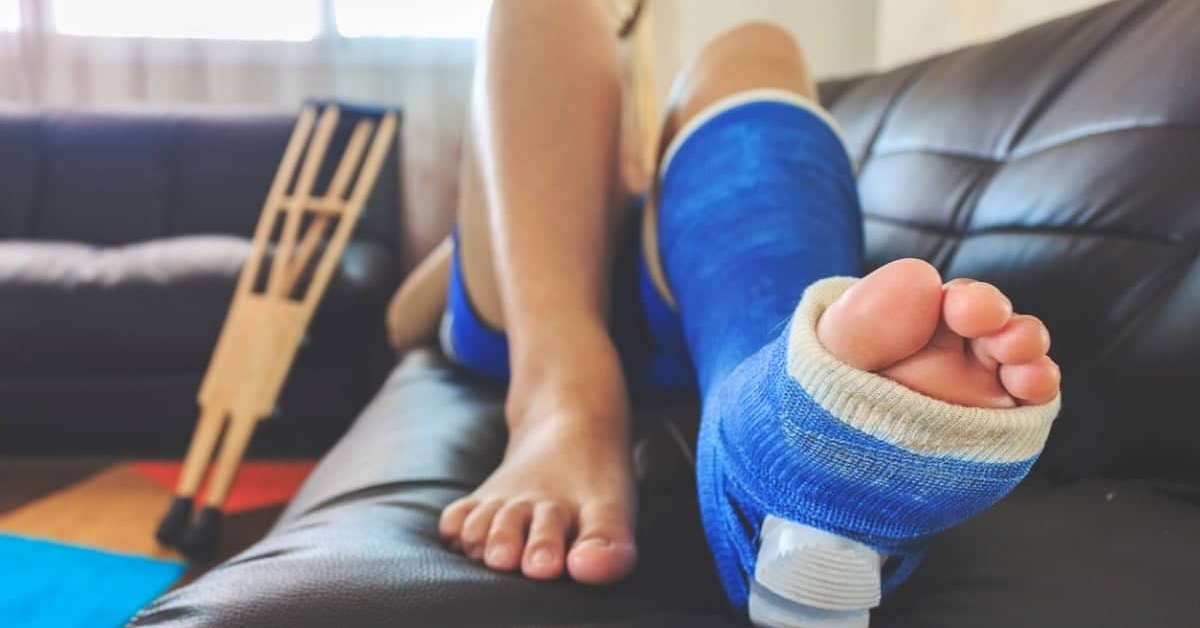When it comes to mobility, humans rely on nothing as much as their own two legs. The legs are a common site for injury; in fact, data from the Center for Disease Control (CDC) shows that over 5,110,000 visits to emergency departments in 2010 were related to damage to the lower extremity.
Leg injuries such as breaks or fractures can cause excruciating pain and will usually be a challenge to an individual’s mobility. With so many instances of injury to the lower limb each year, thousands of Georgia residents may be saddled with medical bills, lose work and endure pain and suffering. If you have suffered a broken leg injury due to the negligence of another party, you may be eligible to pursue compensation.
Leg Anatomy
In order to understand what happens to the leg when it breaks, it is best to have a basic understanding of the leg’s anatomy. The leg is where 2 of the body’s largest bones reside, and the human leg has a total of 4 bones, which include:
- Femur – thigh
- Patella – kneecap
- Tibia – inner shin
- Fibula – outer shin
The femur, the 2nd largest bone in the body, makes up over 25% of a person’s height and is nearly 20 inches long, followed by the fibula, which averages approximately 17 inches. The hips, knees and ankles are the joints that tie these bones together. A fracture can occur in any of the 4 bones in the leg.
Types of Leg Fractures
There are several types of breaks (or fractures) that can occur in the leg. These types of fractures range in severity, typical associated pain and expected healing time. If a broken leg is expected, it is imperative for the injured person to seek immediate medical attention.
Some types of fractures that can occur in leg injuries include:
- Open / Simple – a break that does not penetrate the skin
- Closed / Compound – the bone penetrates the skin
- Complete – the bone is broken into 2 or more pieces
- Incomplete – the bone is broken but remains in one piece
- Linear – break is parallel to length of bone
- Transverse – break at right angle to bone’s long axis
- Oblique – break diagonal to bone’s long axis
- Spiral – bone was twisted into break
- Comminuted – bone has broken into many pieces
- Impacted – bone fragments have driven into each other
- Avulsion – a fracture of bone has separated from the rest, usually at site of tendon or ligament
- Stress – small cracks that develop in weight-baring bones
Causes of Leg Injuries
The leg’s bones may be strong, sturdy and essential to the ability to walk, but sometimes extreme force can impact these bones and cause a break. Usually, a broken leg is accompanied with bruising and in many cases, lacerations.
Some incidents that can lead to injuries in the leg include:
- Auto Accidents
- Motorcycle Accidents
- Truck Accidents
- Bicycling Accidents
- Sports Activities
- Slips, Trips and Falls
- Defective Products
- Dog Bites
- Unsafe Premises
These are just a few of the possible causes for damage to the lower extremity. If you believe you may have suffered a leg fracture, you will likely feel symptoms right away.
Symptoms of a Broken Leg
The symptoms of a broken leg are usually apparent immediately, as broken bones tend to cause excruciating pain. There are few cases where the breakage is nearly undetectable to the victim and the symptoms are mild. A healthcare professional can administer x-rays to determine a diagnosis.
Symptoms that usually accompany a broken leg include:
- Pain that increases with movement
- Tenderness
- Swelling
- Bruising
- Difficulty walking
Injuries involving the legs are often debilitating for some period of time. It is essential to seek medical attention for treatment to facilitate healing and prevent complications.
Treating a Broken Leg
If you visit the doctor or hospital with symptoms of a broken leg, you will undergo diagnostic tests to identify the site and severity of your injury. Usually, treatment of a broken bone follows these procedures:
- Re-alignment
- Immobilization (splint/cast)
- Medication
- Rehabilitation
The healing period required for a broken leg injury varies, depending on the type and severity of fracture. If the trauma to your leg was caused by the negligence of another party, you are urged to contact an experienced attorney to explore your legal options.

